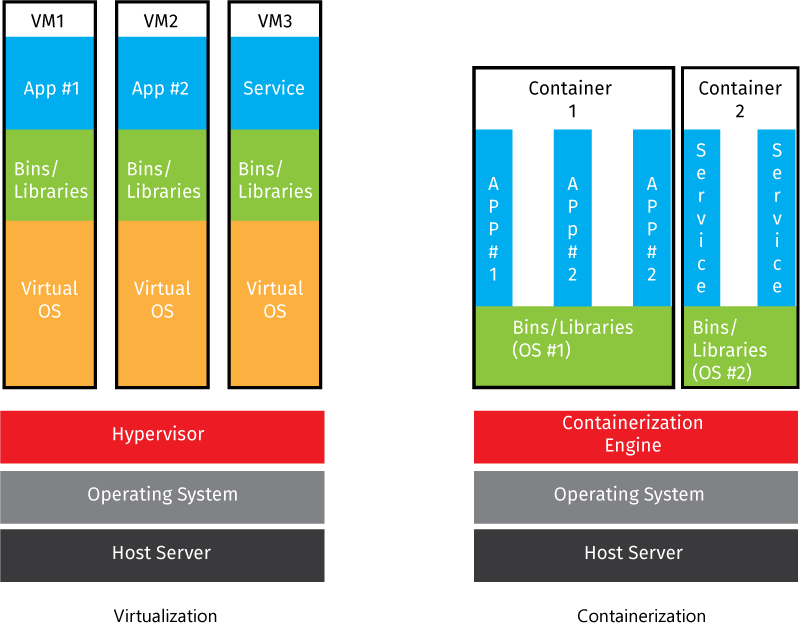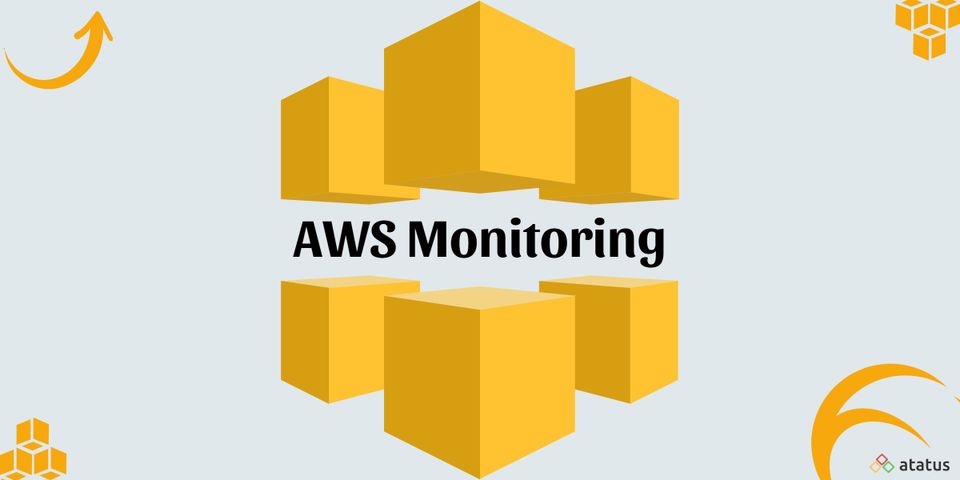Application containerization isn't simply a new buzzword in cloud computing; it's revolutionizing how resources are distributed in the cloud. Many others, on the other hand, are still getting their heads around the concept of application containerization, how it works, and the benefits it may provide.
We will cover the following:
- What is Application Containerization?
- Benefits of Application Containerization
- Containerization vs Virtualization
- How Application Containerization is Used?
- Why Application Containerization is Useful?
What is Application Containerization?
Application containerization turns your virtual machine (VM) or physical server application environment into a segmented, cloud-based environment. Application containerization and orchestration tools have become a popular solution for testing and deploying applications to the cloud as more enterprises recognize the benefit of cloud computing.
The technology has various advantages, including being less resource-intensive, scalable, and able to reduce IT and hosting expenses. You might be interested in switching to a containerized infrastructure, but first, you need to understand the benefits and what you'll need to get started.
Application containerization is a radical rethinking of how software development teams can make the best use of computational resources for software testing, microservices, and distributed applications.
Benefits of Application Containerization
The hypervisor allows the guest operating system to connect with the underlying host kernel, allowing virtual machines (VM) to run different operating systems. Any applications installed in the environment are restricted to the physical hardware allotted to them and are unable to connect directly with the host kernel. The container runtime uses the underlying operating system, but the application containers interface directly with the host operating system kernel, making it a significantly lighter solution.
This leads to speedier applications, more simplified deployment, and an isolated environment where one container failure has no impact on other containers. Other advantages include:
- Portability
Containers can be deployed across cloud suppliers, removing vendor lock-in based on code. - Lower Resource Consumption
Containers are less resource-hungry due to the way they run, lowering total IT expenses for application hosting. - Automation
Containerized environments and automation go hand in hand because orchestration systems like Kubernetes, Docker Swarm, and OpenShift can generate and configure containers. You can use orchestration tools like Kubernetes with the big cloud providers (Google, Amazon, and Microsoft). Elastic Container Service (ECS), an AWS-developed orchestration tool, is also available. - Adaptability
Containers can be shared to increase or decrease resource allocation as application traffic surges and lowers. - Security
Containers are separate from one another, so a breach in one does not impact the others.
Containerization vs Virtualization
Containerization sounds a lot like virtualization in a nutshell. Containerization and virtualization both make the LAMP stack feel isolated. However, there is a significant variation in the way they are layered.

Containerization and virtualization both require a host server and an operating system. What makes a difference is what runs on top of the host operating system.
A hypervisor operates on top of the host OS in virtualization, while a container engine operates on top of the host OS in containerization. On top of it, the hypervisor runs a full-fledged OS, while the containerization engine runs containers.
Containers share the kernel with their host OS, whereas OS operating on top of hypervisor has its own kernel. An image is used in both virtualization and containerization, however, a container image is significantly smaller than an OS image.
The following are some of the benefits of containerization:
- Because the image is smaller, it can be stored more efficiently.
- Because they are less sophisticated than a full-fledged OS, they have a faster starting time.
- It requires fewer CPU resources on average than an operating system, making it a more efficient and cost-effective option.
Containerization, on the other hand, has some disadvantages:
- It shares a single kernel, making it less secure than virtualization.
- Containers must be compatible with the containerization engine, whereas virtualization can function using regular processor instructions.
How Application Containerization is Used?
Huge corporate businesses frequently have a large codebase to which developers add features and upgrades over the course of the software development lifecycle. Testing, deployment, and the overall lifecycle are all hampered by monolithic codebases. Many developers may have multiple files checked out, and a single error could have a significant impact on the entire application.
For each upgrade and a new feature, the complete application must be compiled, tested, and re-deployed. This process takes time, and new code may not be merged into the production codebase for months. The application is divided into microservices in a containerized environment, with each component running in its own pool of containers for high-traffic workloads.
These containers are separated from the underlying environment and operate independently. They communicate and collaborate via REST APIs, but if one of them fails, just that component must be investigated, rectified, and re-deployed.
Developers working on a single component can use containers to deploy to their laptops, which acts as a virtual machine or a private cloud location. They don't have to deploy a massive compiled codebase, set up it, and then problem repair it because they can test and evaluate the code individually.
Containers and their configurations can be automated, allowing developers to use a "click and deploy" way to create a container, run the application, and then remove it when they're done testing. When deploying to production, the same "click and deploy" method can be employed, resulting in a faster deployment.
Why Application Containerization is Useful?
Application containerization allows enterprises to start particular applications without having to rent a full virtual machine. It accomplishes this by “virtualizing” an operating system and providing containers with access to a single operating system kernel, with each container containing the application and the software required to run the application (settings, libraries, storage, etc.).
Application containerization allows numerous applications to be deployed across a single host operating system without the need for their own virtual machine, which can save a lot of money. Previously, a server hosting eight apps in eight virtual machines would have eight copies of the operating system running in each virtual machine, but now 10 containers can share the same operating system.
Application containerization offers increased portability in addition to significant cost reductions. Because there is no need to wait for the operating system to boot up, this can speed up the process of testing apps across different operating systems. Furthermore, if the application crashes during testing, the isolated container rather than the full operating system is shut down.
The advantage of application containerization is that it allows containers to be clustered together for easy scaling or to collaborate as microservices. If one application needs to be updated or replaced in the latter situation, it can be done independently of the other applications and without shutting down the entire service.
Lower costs, greater portability, and minimal downtime are three reasons why application containerization has become more than just a new buzzword in cloud computing and is changing the way resources are deployed into the cloud.
Summary
Application containerization is a rapidly evolving technology that is revolutionizing how developers test and run cloud-based application instances. Application containerization has the primary advantage of being a less resource-intensive option to running an application on a virtual machine. This is due to the fact that application containers can share computing resources and memory without requiring each application to run on its own operating system.
Monitor Your Entire Application with Atatus
Atatus provides a set of performance measurement tools to monitor and improve the performance of your frontend, backends, logs and infrastructure applications in real-time. Our platform can capture millions of performance data points from your applications, allowing you to quickly resolve issues and ensure digital customer experiences.

Atatus can be beneficial to your business, which provides a comprehensive view of your application, including how it works, where performance bottlenecks exist, which users are most impacted, and which errors break your code for your frontend, backend, and infrastructure.





